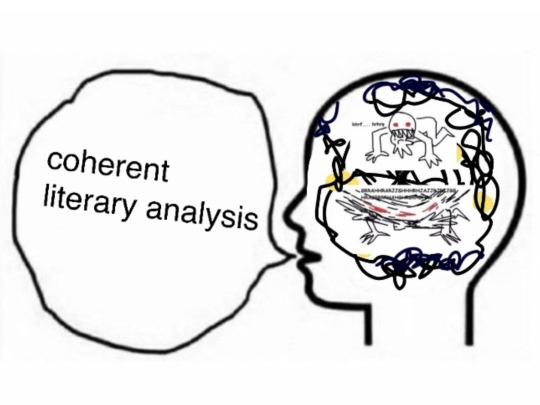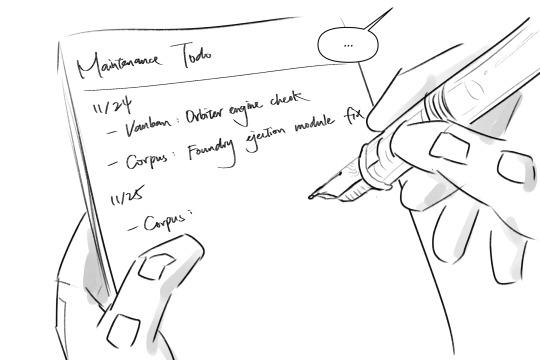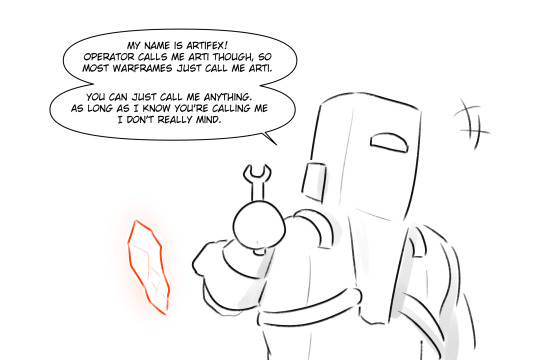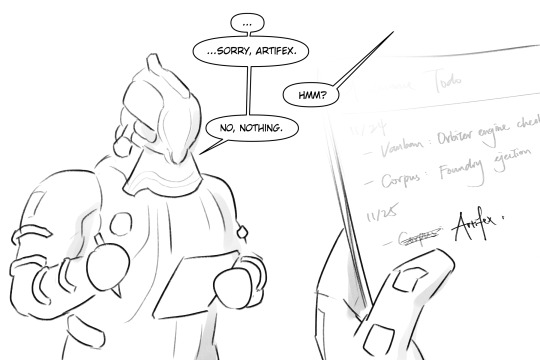#the literature express
Explore tagged Tumblr posts
Text


what studying literature feels like
#it’s always one of these two.#either i have a great point in my head i just can’t express it right or i have OUGHDGDHHD in my head and i need to make that useful…….#pip squeaks#literature
125K notes
·
View notes
Text

#light academia#dark academia#classical#academia aesthetic#escapism#academia#books and libraries#classic literature#books#architecture#art#interpretation#eye#van gogh#starry night#beautiful#royal core#cottage core#aesthetic#academic#artistic#expression#mood#vibe#tumblr
745 notes
·
View notes
Text
cnetizen: it is not recommended that you call your partner baby..


#china#meme#fun#the tag is 发疯文学 (lit. mad literature)#to talk nonsense in a serious manner#to express an opinion arbitrarily with no restraint at all#to appear to be serious but in fact joking#not caring what others think#cnetizens
749 notes
·
View notes
Text
I shall love you for all eternity. So rest assured, you will never be forgotten, unloved or alone, for I am here at your side or from afar until the end of time.
#spilled ink#spilled thoughts#spilled words#spilled writing#spilled heart#world#literature#writing#self expression#thoughts#love#one sided crush#one sided love#words
2K notes
·
View notes
Text
i’m either too direct or don’t express my emotions at all
#i’m either too direct or don’t express my emotions at all#feelingsoftheday#feelings#words#life quotes#lit#literature#quotes#quoteoftheday#spilled thoughts#relatable quotes#reading#inspiring quotes#relationship quotes#art#romance quotes#shakespeare
433 notes
·
View notes
Text

“The Devil’s Favourite Benzo”
• Welcome to The Oscy Rich Lounge •
#the oscy rich lounge#expression#life#aesthetic#art#love#me#writing#literature#diary#painting#my painting#original painting#xanax#pfizer#drugs#acrylic#acrylpainting#benzos#benzodiazepine
280 notes
·
View notes
Text
Writing Notes: Body Language
Body language - involves communication provided through nonverbal channels. This includes posture, facial expressions, eye movement/contact, proximity to others, and physical movements (Pease, 2017).
Body Language vs. Nonverbal Communication
Nonverbal communication - includes all forms of communicative acts except speech.
Body language - a type of nonverbal communication. It lies under the umbrella of nonverbal communication, which encompasses a broader scope of communication (Milton & Randall, 2022).
One way to differentiate between the two is to think about body language as all the nonverbal communication that can be seen (Milton & Randall, 2022).
Nonverbal communication that is not considered body language (or cannot be seen) includes repetition of words or statements, vocal characteristics of speech such as tone and volume, and sounds that might not be considered words such as “hmm” and “uh-huh.”
Some types of body language include:
Facial expressions. The face is an extremely expressive form of body language, with the ability to communicate numerous emotions without a single word. From anger to anxiety, fear to grief, embarrassment to disgust, facial expressions are one form of nonverbal communication that is considered universal across cultures and species (Keltner, 2009).
Gestures. Hand, arm, and body gestures are part of daily life. So much so that now in video calls or online meetings, a hand gesture or arm movement can simulate a thumbs-up or heart emoji. Gestures can be positive, such as an “OK” signal, or negative. Gestures are largely cultural and may express different meanings depending on geography and ethnicity.
Posture. How an individual moves and holds themselves communicates information in subtle and powerful ways. Posture includes how someone sits, holds their head, stands, walks, and engages their physical stance.
Eye contact. Our visual sense is especially important in nonverbal communication. The way we look at others can communicate many things and help to improve or detract from the flow of conversation. Eye contact can convey affection, anger, attraction, and interest, among other things.
Physical touch. Physical touch is a powerful form of body language and nonverbal communication. From hugs to handshakes, touch demonstrates a variety of messages. Touch is also a very personal way to express interest, emotion, and engagement with others and can be received well or create discomfort and tension.
Personal space. Physical space in interactions is also a very personal aspect of body language. Our need for or comfort with it depends a great deal on culture, the specific relationship, personal preferences, past experience, and the given situation. Understanding other people’s boundaries is an important component of assessing the need for personal space.
As more interpersonal communication becomes virtual, it is important to be aware of how body language is portrayed on a screen. Some ideas to consider in virtual sessions include:
Make sure lighting is sufficient so clients and/or members can see facial expressions and pick up on body movement.
Be aware of posture. It is easy to get too comfortable behind a screen and hunch over. Have good support when sitting, staying upright and attentive.
Maintain healthy eye contact. It may be beneficial to shift between looking at the screen and looking directly at the camera to avoid uncomfortable stares.
Avoid touching the face and head too much, as this conveys insecurity and can be a distraction.
Smile and use warm facial gestures, as the face is the main thing people see in virtual meetings.
Use hand gestures. This will require the computer or recording device to be placed far enough away to capture some of the upper body.
Cultural differences in body language exist. Below are samples that have been observed. It is not an extensive list of all cultural differences in body language, but it demonstrates that ongoing education and awareness are important when working with others in personal and professional settings.
Hand gestures. A thumbs-up in Western cultures is a signal of “OK,” but in the Middle East it is a sign of “up yours.” Similarly, curling the index finger (a sign to move closer) is considered impolite and rude in areas such as China and the Philippines (Cortez et al., 2017).
Eye contact. Most Western countries view eye contact as a sign of confidence and interest. In many Middle Eastern countries, eye contact between sexes is deemed inappropriate, and in some Asian cultures, unbroken eye contact is seen as aggressive and confrontational (Cortez et al., 2017).
Touch. Northern Europe and Far East cultures engage in very little physical contact or touch, where physical touch is a large part of socializing in the Middle East and Latin America (Cortez et al., 2017).
Seated positions. In Japan, sitting cross-legged is a sign of disrespect, and showing the soles of the feet is offensive in Middle Eastern countries (Cortez et al., 2017).
Interpreting Body Language
Argyle (1978) was one of the first modern researchers to study nonverbal communication and believed that humans have more than 700,000 forms of body language. Some specific areas to note for interpreting body language include paying attention to the head, face, eyes, arms, and hands.
Head. Nodding when another person is speaking is a sign that you are focused and listening. It can demonstrate that you agree with or acknowledge what is being said and validate opinions. Tilting the head to one side is also a sign of attentive listening and respect. Both of these are considered positive gestures in conversation. A lowered head or head back with a rigid neck is a sign of a negative attitude, criticism, denial, or rejection. When someone is supporting their head with their hands, this is a sign of boredom and disinterest. And angling the chin upward is a sign of arrogance and dominance (Danesi, 2022).
Face. As most people know, smiling is an open, approachable facial gesture that indicates warmth and interest. On the other hand, frowning is a sign of anger, disinterest, or disagreement with what is being communicated. Raising the eyebrows is a sign of surprise, and raising a single eyebrow tends to be an expression of disbelief. Pursed lips tend to demonstrate anger, sorrow, or a lack of acceptance, depending on the situation (Danesi, 2022).
Eyes. It is often said that the eyes are the window to the soul. Eye contact is the basis for understanding in conversation. When eye contact is avoided, it may demonstrate discomfort, uncertainty, or shyness, or signal that the person has something to hide. When someone’s eyes are narrowed, it could indicate anger. Briefly closing the eyes and quickly opening them again is called confirmatory blinking and can indicate confirmation or approval of another person (Danesi, 2022). Narrowing the eyes can mean several things, such as confusion or a need for more information. It may also indicate concentration or anger. It is also important to notice the pupils. Dilated pupils can demonstrate interest and attraction, while widening the eyes can signal surprise or excitement.
Arms and hands. Upper body postures consist largely of the arms and hands, which are the most mobile and prominent demonstrations of body language. Crossing the arms is a way for someone to create distance and demonstrates a negative attitude (Danesi, 2022). When arms are crossed and the individual is gripping their upper arms, this signals tension and discomfort. Arms crossed with balled fists are also negative body language but signal aggression and anger. Putting hands on the hips can be a sign of aggression or dominance. Putting hands in pockets signals a lack of engagement and defensiveness (Danesi, 2022).
General Tips on Interpreting Body Language
In general, self-confident people frequently look at their reflection in mirrors or windows and place themselves in a position to be the center of discussion. People demonstrate confidence through large gestures, big postures, self-assured smiles, firm handshakes, and steady eye contact. Embarrassment, insecurity, and low confidence are seen through nervous laughter, avoidance of eye contact, turning away, and avoidance (Mandal, 2014).
Nonverbal cues of fear can be seen with wide eyes, clutching, and gripping. Holding the breath, glancing around, and placing hands in front of the body is also a sign of fear (Mandal, 2014).
People demonstrate resentment with crossed arms, a stiffened body, hunched shoulders, and low vocal tone (Mandal, 2014).
Sexual interest and attraction can be seen through eye contact, exaggerated facial gestures, blinking, wetting the lips, touching the body, or crossing and uncrossing legs (Mandal, 2014).
Source ⚜ More: Notes & References ⚜ Writing Resources PDFs
Hand Movements ⚜ Common Gestures ⚜ Facial Expressions
#body language#communication#writing notes#writeblr#psychology#dark academia#writing reference#writers on tumblr#literature#spilled ink#writing prompt#culture#creative writing#gestures#character development#facial expressions#light academia#writing tips#writing advice#fiction#writing resources
232 notes
·
View notes
Quote
Do not allow your happiness to be controlled by the thoughts of others. People are happy for you one minute and then the next they are looking down their noses at you. You have to find within yourself the kind of happiness that withstands the ups and downs of life. No one should have the power to limit or repress your happiness.
Amaka Imani Nkosazana, Heart Crush
#Amaka Imani Nkosazana#Heart Crush#quotes#motivation#inspiration#thepersonalquotes#literature#lit#bravery#courage#dedications#deeds#depression#emotions#expressions#freedom#friends#friendship#goals#god#happiness#honesty#hopeful#inspirational-quotes#inspirational-words#inspire#interests#joy#kindness
169 notes
·
View notes
Text

Murder on the Orient Express Agatha Christie FYI - this is 1 of 12 vintage paperback classics that comprise our current giveaw@y.
87 notes
·
View notes
Text
(prev | next | first)




yay i gave him a name
#tbh im not a good storyteller so it's hard for me to come up with a plot given a setting#usually i have a plot and then see what settings i can add. but this time it's the opposite#or should i say... the actual correct thing to do...#that is. given that you have a full character with specific intent and you wanna express something tho. im not that deep#anyway i tried to not just make everyone call him arti without properly introduce the name in this series#and if you want the author's interpretation...#(also proves that i don't do much literature because apparently anti-intentionalism is the current fashion)#vauban is using pen and paper because he's still an inventor and likes to mess around with ideas more with pen and paper than with a tablet#he doesn't really care about details in life so when vauban thought calling him the corpus is sufficient enough to identify him-#-he didn't even think about asking his name before until he realize how rude he was (we don't discriminate against corpus on ship okay)#and as for the name artifex... let's just say i want him to be more than an ordinary crewmate#warframe#warframe vauban#warframe corpus#warframe corpus artifex#my art
77 notes
·
View notes
Text
I'm just hurting
#bookshop#bookstore#books#read#bookish#book shopping#writers#authors#literature#stories#quotes#reading#poem#poetry#poets on tumblr#poems#poems on tumblr#words#love#love poems#original poems#poems and poetry#i love you#heartbreak#sad poem#sad poetry#friendship#firends#feelings#express
159 notes
·
View notes
Text

another ode to mary oliver
#didn't even have a picnic today i just think it's fun to write in her style sometimes#it's so different from my usual style and it lets me exercise the muscle while also expressing hope and joy#theo writes#useramys12#mary oliver#original poem#original poetry#spilled poem#spilled ink#poem#poetry#words#quotes#literature#poets on tumblr
141 notes
·
View notes
Text
“I did not find a language to describe what was inside me except silence.”
#writing#spilled ink#spilled thoughts#spilled words#quotes#quote#life quote#life qoute#life quotes#self expression#silence#feelings#deep emotions#quotesoftheday#literature#poem#poetry#spilled writing#writers on tumblr#writeblr
69 notes
·
View notes
Text
And for a moment, I thought I had you in my arms only to realised it was just a dream. Waking up has never been so painful.
#literature#love#self expression#spilled heart#spilled ink#spilled thoughts#spilled words#spilled writing#thoughts#writing#spilled feelings#words#poetry#emotions#spilled emotions
410 notes
·
View notes
Text

Aaaand to match the Green Knights I posted the other day, a couple of Gawains 💙~
#denndrawings#digital art#character design#arthuriana#arthurian literature#arthurian legend#sir gawain and the green knight#sir gawain#medieval literature#character design project#expression sheet
92 notes
·
View notes
Text

*narrator voice* He was, in fact, not fine
#transformation horror my beloved#perfect excuse to practice some funky expression#also hooray for nightgown Jekyll#next time I'll add a silly little hat to go along with it#jekyll and hyde#gothic literature#my arrrt#the strange case of dr jekyll and mr hyde#edward hyde#henry jekyll
88 notes
·
View notes